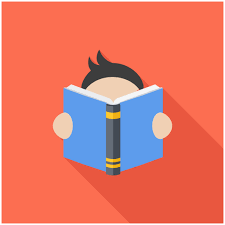Keep Students Reading during Home-Based Learning
[The contents here originated from a post sent to teachers on 4 April 2020, after the announcement of full Home-Based Learning in Singapore to stem the Covid-19 spread.]
Even as we had moved towards partial Home-Based Learning (HBL) early this week, I started to worry about how we can get our students to continue engaged reading to avoid “summer reading loss” as they stay home for extended periods.
It's summer all year in Singapore, but the key idea here is that low-income students tend to fall behind in reading practice as they stay at home over extended summer breaks. In the meantime, students who come from middle-class homes where they have books at home (e.g. I can purchase books for my children, get them to read online because I know how to) continue reading.
As we found in the survey of 6,005 students in our Building a Reading Culture (BRC) study, children in poverty (defined in our study as students on the Financial Assistance Scheme) were less likely to have many books at home and reading role models at home.
In the BRC study, we also found that students who were already readers tended to read on print and other devices (phone, tablet and computer). On the other hand, non-readers were less likely to use their devices to read.
A recent article I read by McVickers focusing on 9-10 years old reading on print and ipads told me what I suspected – some students just didn’t realise that the ipads could serve as reading devices. In the same way, many of our secondary school students may not be aware that they can use their devices such as the phone for reading.
Finally, many students who are not readers may not have had help to find the right books. So active book recommendations by teachers (that are interesting and at the students’ level) are required to help low-proficient students and/or non-readers get into engaged reading, i.e. self-motivated independent reading.
Ideas for Online Reading Lessons/Assignments
In light of the month long HBL and the cancellation of mid-year assessments, here are some ideas for keeping students reading and tying it to your instructional/ informal assessment aims.
Spend a synchronous lesson getting students on the NLB app, teaching them to access e-books on the app (https://www.nlb.gov.sg/static/nlbmobileguide/). A synchronous lesson is useful as you can model how to search for books and make book recommendations at the same time.
Get students logged into Audible.com to listen to free audiobooks(https://www.goodhousekeeping.com/uk/lifestyle/editors-choice-book-reviews/a31401009/audible-stories-free-childrens-audio-books/). Listen to a few books yourself so you can make a few recommendations. Some readings are more exciting than others.
Integrate the readings into the curriculum. i.e. make it your lesson for the day. Rather than writing a book summary, get the students to make book recommendations (written or oral) or to create short Instagram posts about what they are reading.
Have a synchronous reading aloud lesson. Find an interesting book and read it aloud to your students to get them interested. My primary 3 daughter loves comics but needs motivation to start reading what she calls “thick books” (a recent one being “Charlotte’s Web” which she had to complete for her reading assignment). I read the first three chapters and she finished the rest of the book on her own in the next three days. Getting the reader started and hooked does help with motivation. This deals with the issue of efficacy (i.e. students’ belief as to whether they can tackle a task or not).
Send the students a short story. Have a Round Robin reading lesson where students take turns to read. You are giving them oral practice when you do this. In fact, you can turn this into an informal assessment.
Have students do book talks, book trailers or teasers(https://www.scholastic.com/teachers/blog-posts/alycia-zimmerman/booktalks-book-trailers-and-book-teasers/). Again, these can be used as informal assessment of students’ oral skills while getting them to engage with a book.
Start a book matching service. If you need some help, turn to NLB e-reads for teens (https://nlb.overdrive.com/collection/21737). You can narrow down the books by genre. Organize personal consultations with students in online small group sessions where you spend the time discussing with the students what books they might find interesting. Get them to commit to reading or listening to a book together.
Start online book clubs with your students. Many of the classics are available online (http://www.gutenberg.org). Read H.G. Wells War of the Worlds (http://www.gutenberg.org/ebooks/36) and discuss the end of the world, bio-warfare, science and literature. If your Science colleagues are keen to, start an interdisciplinary inquiry-based study around a book study.
Create a recommended book list. Start out a list of 5 to 10 books that range from popular to classic and challenge your students to a reading race where students who can complete a certain (reasonable) number of books at the end of the HBL season get a small reward.
Spend some time researching and reading what children and teenagers read so you can be more familiar with the books. When term restarts, recommend these books to your students. Goodreads or the NLB Teen section is a good place to begin.
